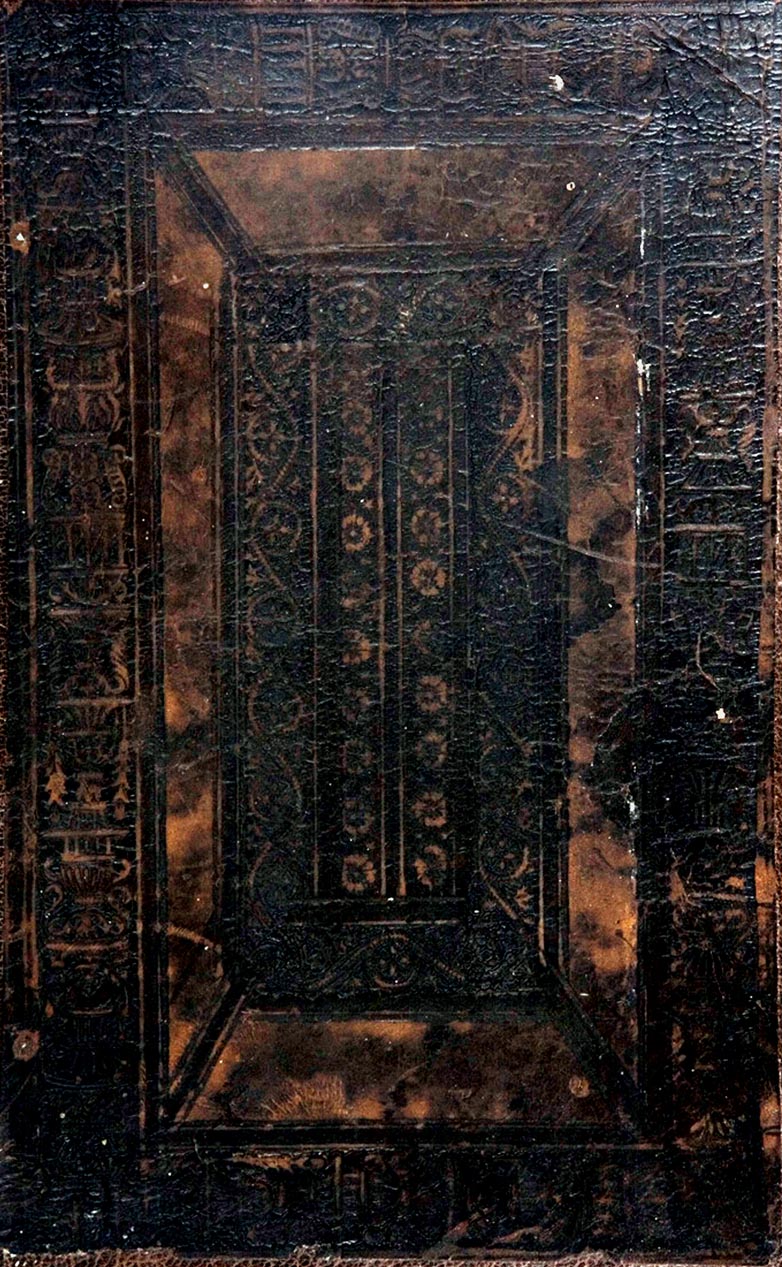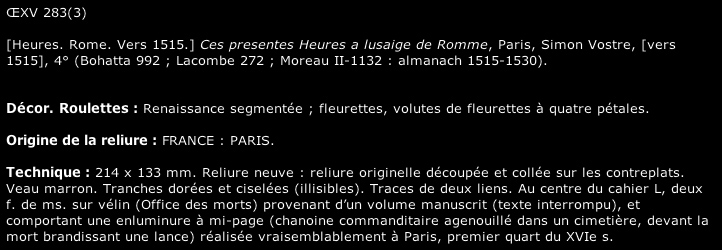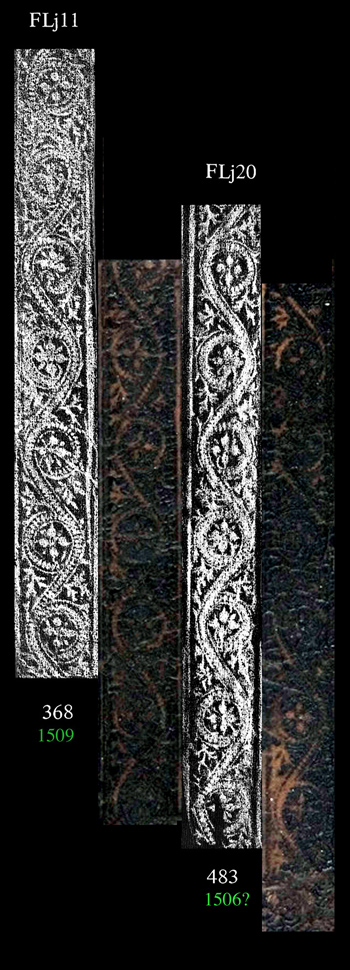|
At first sight, and even with enlarged images you might think this roulette is the same as Denise Gid's type RCi, however after a very careful examination you will see that it is not exactly the same. To compare a roulette such as this one with the 1984 catalogue diagrams of Denise Gid you need to follow an elaborate procedure. She has illustrated 60 variations of the Renaissance continu roulette. They are all of different sizes and complexity, and they all have been illustrated from a different starting point. As we now know the design of this roulette form derives from a specific decorative panel (click here to see a page on this) and logically each rubbing example should start with an orientation that is the same as the original panel i.e. with footed table at the bottom. Probably a study of the variations of the shape and form of this table would be an easier way to sort out these roulettes. However let us proceed with what we have. This work cannot be done without a computer and digital editing program such as Photoshop. First we need to scan the catalogue rubbings and resize them to an enlarged size, such as 300 dpi. The rubbings have been printed at 100 percent scale, they are the actual size of the rubbing, this is too small for our needs. Next we need to resize the digital image from BSG, this is easy to do because they have included a scale with the reproduction. The image you download from BSG is at 72 dpi, you should transform this to 300 dpi, then copy and past a section of the scale, lets say a 20 cm section in a new image file. Open the image size menu, you will notice that it is less than actual size, now enter 20 cm as the new image size, before you actually change the size note the percentage of the change in the file size for height and width, they will be roughly the same but as you are really just concerned with height note this percentage of change. Now you can return to your binding image and change the size of the image with the appropriate percentage to arrive at a 100 percent scale at 300 dpi. Easily checked by measuring the scale. Now you can copy and paste a strip of roulette imprint into the catalogue plates to try to find a matching imprint rubbing. Size is very important in this work, you can eliminate a lot of searching by just looking for something that is about the right size in width. If you are lucky you will find a match quite quickly however in the case of our OEXV283 binding, no example of this roulette has yet been identified. We can rename this roulette RCi-2.
|





